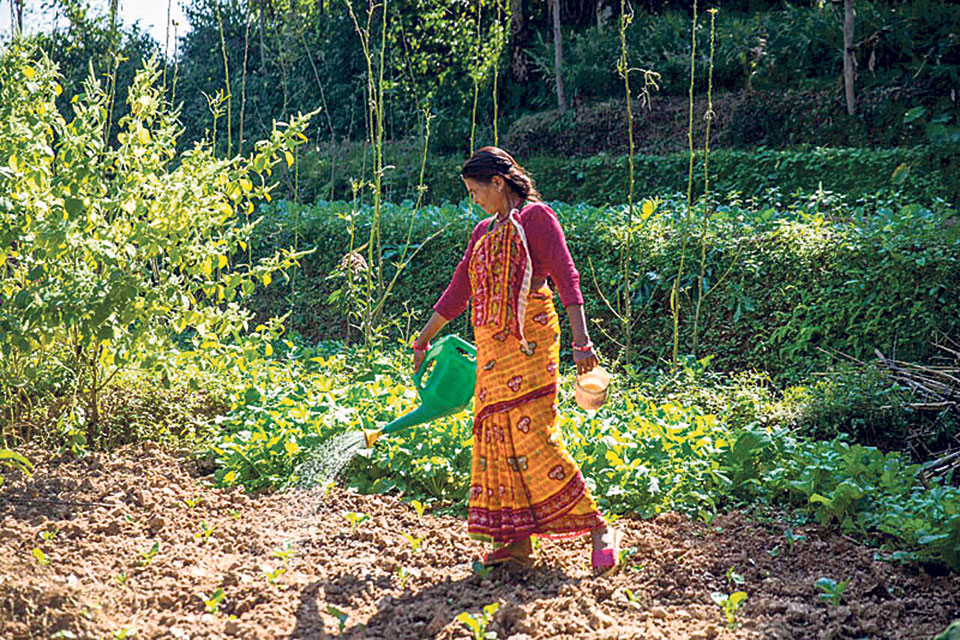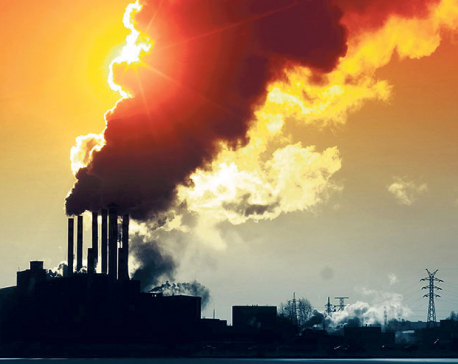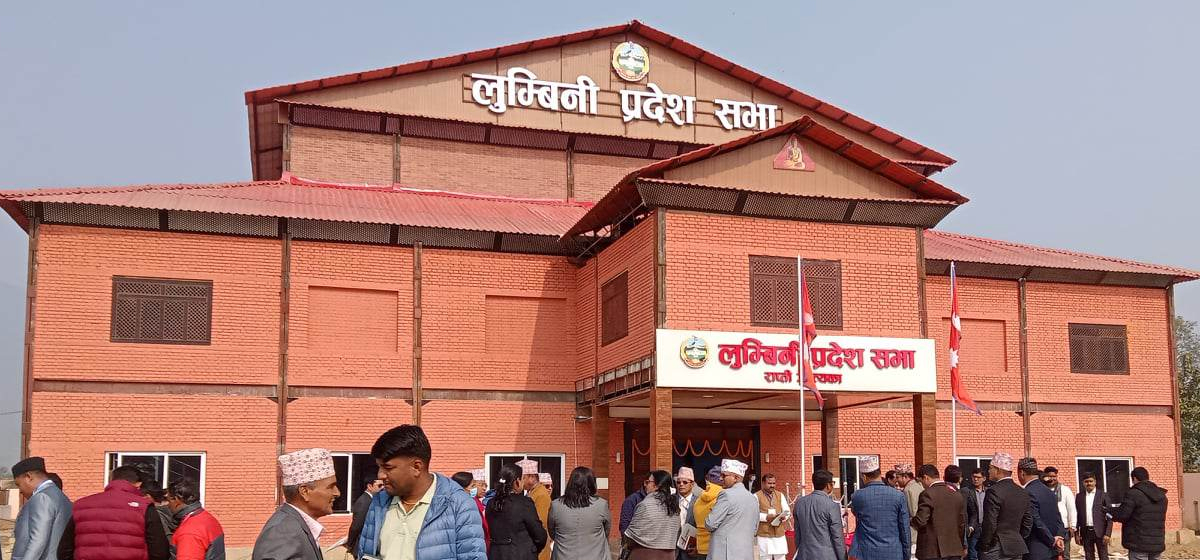
OR

Climate change is one of the burning issues that countries around the world, including Nepal, are currently facing. It is the abnormal variations to the climate, which is largely attributed to the increased levels of atmospheric carbon dioxide and other harmful gases produced as a result of various types of human activities. Global warming, a rise in average global temperature, is said to have resulted from climate change. Here are some tips to address this pressing issue.
1. Use energy wisely
Unplug computers, TVs, and other electronics when you are not using them. Use energy-efficient light bulbs and energy-efficient appliances. Avoid using appliances that emit greenhouse gases. Get a home or workplace energy audit to identify where you can make the most energy-saving gains. Turn off electronic devices when you are not using them.
2. Switch to renewable energy sources
Minimize the use of fossil fuels and switch to using renewable energy sources such as hydroelectricity and solar power. Minimize using a gas geyser, refrigerators, and air conditioning that emit harmful gases.
3. Recycle and reuse
Recycling is a cost-effective and eco-friendly process that eliminates waste and does not emit greenhouse gasses into the environment. Be sure to collect your discarded paper, glass, plastic, and electronics to your local recycling center.
4. Minimize the use of plastics
Try to replace the use of plastic products with the ones made up of natural fibers. Wrappers, shopping bags, and various plastic items used in the kitchen can be replaced with the ones made up of jute, cotton, reusable paper, and polypropylene.
5. Start climate conversation/advocacy
Help increase awareness about climate change among family members, friends, and others in your community. Since people often trust peers, family members, and loved ones more than what experts, scientists, and environmental organizations say, talk to people about climate change in ways that persuade them to implement the theory into action. Solving climate change requires us all to work together. We cannot do that without finding common ground with those who may not share our perspective. Fun-based interaction and community work may yield effective results in the line.
6. Divest from fossil fuels /drive less
As we still live in the world with high use of fossil fuels that pose various types of risk including heavy financial losses in businesses, many banks, and investment advisers are warning clients about the dangers of fossil-fuel-related portfolios, noting that climate agreements, government regulations, reduced demand, and market volatility make them risky. You can motivate people to prefer cycling and walking than using fuel-based vehicles for travel in order to help reduce carbon footprints.
7. Support or join youth-led programs
Young people have the most at stake when it comes to the effects of climate change. All over the world, kids, teenagers, and young adults are taking matters into their own hands in inspiring ways. Help them grow their movement by joining and supporting them however you can.
8. Reduce food waste
A third of the food raised or prepared does not make it from farm or factory to fork. On average, the food we waste contributes 4.4 gigatons of carbon dioxide equivalent into the atmosphere each year—roughly eight percent of total anthropogenic greenhouse-gas emissions. The interventions that can address key waste points in the food chain are numerous and varied. In lower-income countries, improving infrastructure for storage, processing, and transportation is essential. Strengthening communication and coordination between producers and buyers is also paramount for keeping food from falling through the cracks.
9. Proper garbage/sewage management
Physical, chemical, and biological processes can be used to remove contaminants and produce treated wastewater that is safe enough for release into the environment. Collect the garbage as per biodegradable and non-biodegradable types. Avoid mixing the pollutants such as heavy metals, organic compounds, animal waste, oil, and grease in rainwater.
10. Planned urbanization/avoid land plotting
Rapid deforestation for people's settlements accounts for a significant proportion of emissions. Strong community advocacy for proper land use and check the further expansion of land plotting can help raise concern at the policy level to implement a proper action plan for planned urbanization.
11. Increase the use of public transport
With an increase in income level, people are aspiring to own vehicles, which is one of the major causes for the fuel consumption. Maximum use of mass transport system could help a lot in this regard.
12. Reduce water waste
Saving water reduces carbon pollution too. This is because it takes a lot of energy to pump, heat, and treat your water. So, take shorter showers, turn off the tap while brushing your teeth, and switch to water-efficient fixtures and appliances.
13. Overhaul your automobiles on time/maintain your ride
Timely overhaul of the automobiles can help check the emission of unburnt fuels. The use of properly inflated tires also contributes to reducing pollution and environmental depletion. Not only the automobiles but also the power plants and machine-based production units need a timely overhaul to reduce emissions.
14. Recycle your clothes
Studies have shown that the clothing sector represents around 3% of the world's global production emissions of carbon dioxide, mostly because of the use of energy to produce attire. The hectic pace of fast fashion contributes to this figure as clothes are discarded after short periods.
15. Revamping the subsidy system
Advocacy is needed to revamp our subsidy system for the energy and food industries, which continue to reward fossil fuels or to set new rules and incentives for sectors like farming, deforestation, and waste management.
16. Weatherize your home
Get your house insulated to reduce using heating devices such as air-conditioning or room heaters. Design your workspace that permits maximum natural light.
17. Plant a garden
Initiatives to maintain even a small garden or terrace farming could help address the issue of climate change. The same can be done on the roadside or in your community.
18. Limit meat consumption
Animal agriculture and eating meat are the two most significant causes of global warming. The burning of fossil fuels, along with deforestation for energy and animal agriculture are among the biggest contributors to climate change. According to the Food and Agriculture Organization of the United Nations, the livestock sector is responsible for about 37% of human-caused methane emissions, and about 65% of human nitrous oxide emissions (mainly from manure), globally.
19. Educating girls
The education gap that exists between males and females is also responsible for global warming. Women with more years of education have fewer, healthier children and actively manage their own reproductive health. In case girls are educated, their families are better nourished, and their household resources are effectively utilized. Education is the most powerful lever available for breaking the cycle of intergenerational poverty and mitigating emissions by curbing population growth.
20. Use less hot water
It takes a lot of energy to heat water. Use less hot water by taking shorter and cooler showers and washing your clothes in cold or warm instead of hot water. Also, adjustment of the thermostat can help check the emissions. Studies have shown that moving your thermostat just 2 degrees down in winter and 2 degrees up in summer could save about 2,000 pounds of carbon dioxide a year.
You May Like This

Nepal’s climate action
That we have to face the adverse impacts of climate change is certain. Question for Nepal is whether we are... Read More...

Pacific leaders seek U.S. return to Paris climate pact
SYDNEY, Sept 7: Pacific island nations declared climate change to be their “single greatest threat”, urging Washington to return to... Read More...

Global Warming
Everyone is well aware of the threats of climate change. It is a serious issue continuously increasing because of the... Read More...



Just In
- Resignation of JSP minister rejected in Lumbini province
- Russia warns NATO nuclear facilities in Poland could become military target
- 16th Five Year Plan: Govt unveils 40 goals for prosperity (with full list)
- SC hearing on fake Bhutanese refugees case involving ex-deputy PM Rayamajhi today
- Clash erupts between police and agitating locals in Dhanusha, nine tear gas shells fired
- Abducted Mishra rescued after eight hours, six arrested
- Forest fire destroys 13 houses in Khotang
- First meeting of Nepal-China aid projects concludes














Leave A Comment